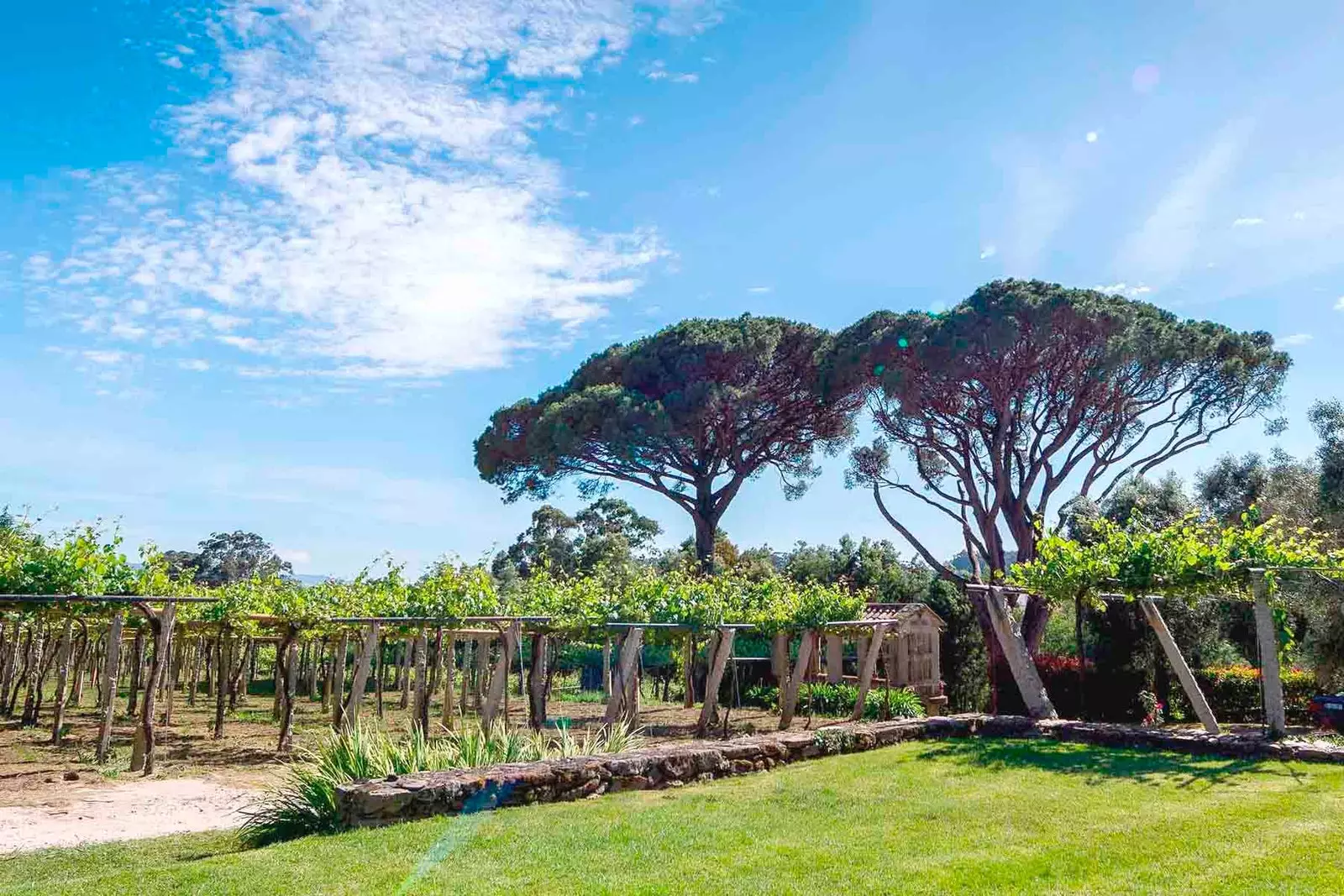
On your way you will discover vines, animals in freedom, ancient trees...
Many paths lead to the valley of or rosebush (El Rosal), cradle of some of the best white wines of the world. It is in the south of the province of ** Pontevedra ** and is a balcony towards the mouth of the My no and the Portuguese neighbors on the other side of the 'raia' (the border line). we have chosen the most spectacular and attractive for lovers of driving on two and four wheels but, before going through it, we will tell you a little more about our destiny.
The Serra do Argallo (Sierra de Argallo) protects the valley of O Rosal to the north; to the west it receives moisture from the Atlantic, and to the south, that of the Miño river. The result is a very mild microclimate, with an average annual temperature of 15 degrees many hours of sun, humidity and an atypical soil in Galicia, less porous than the traditional granite. These factors are combined giving rise to a privileged setting and a amazing fertility, with orchards, forests, cornfields and many vineyards.
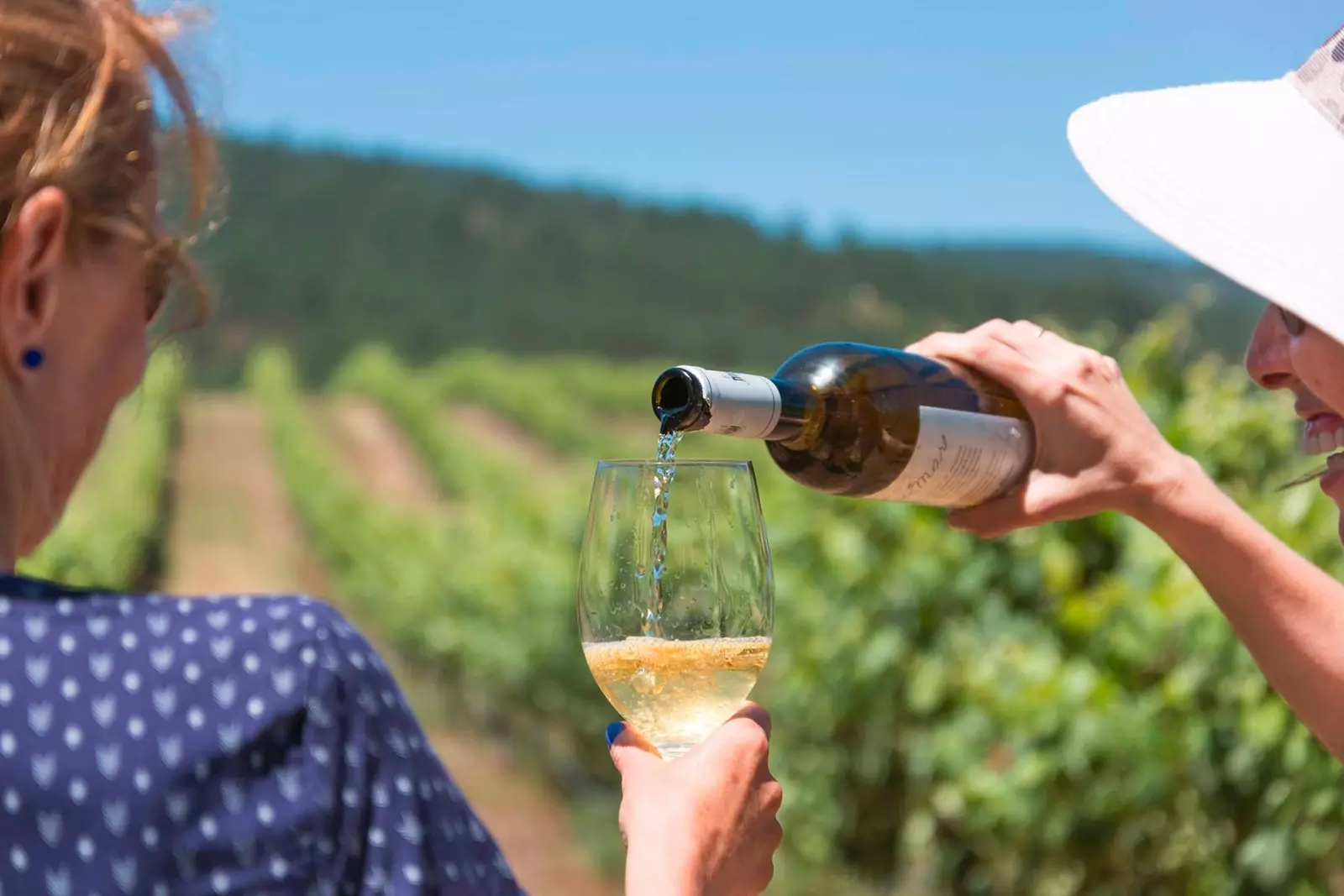
Disconnection in nature and a good glass of wine, the perfect combination
Thanks to this, this valley is one of the subzones of the Designation of Origin Rías Baixas wines , (along with the banks of the Ulla, the Salnés, Soutomaior and the county of Tea) . Condition. it is pretty young , was created in the 80's of the 20th century, but they were precisely some of the wineries of or rosebush which, shortly before, began to do quality wines with native grapes: albariño, loureira, treixadura or caiño. Currently, here are bottled some of those considered best white wines on the planet.
THE PIONEERS
The first to notice the fertility secret that hid the valley of O Rosal, they began to exploit it and planted the first vineyards imitating the French abbeys, were the cistercian monks neighbour's Oía Monastery , between Baiona and A Guarda.
They occupied it from the 12th to the 19th century, when French invasion and confiscation Mendizabal ended up kicking them out. Some of the current wineries are based on their old estates.
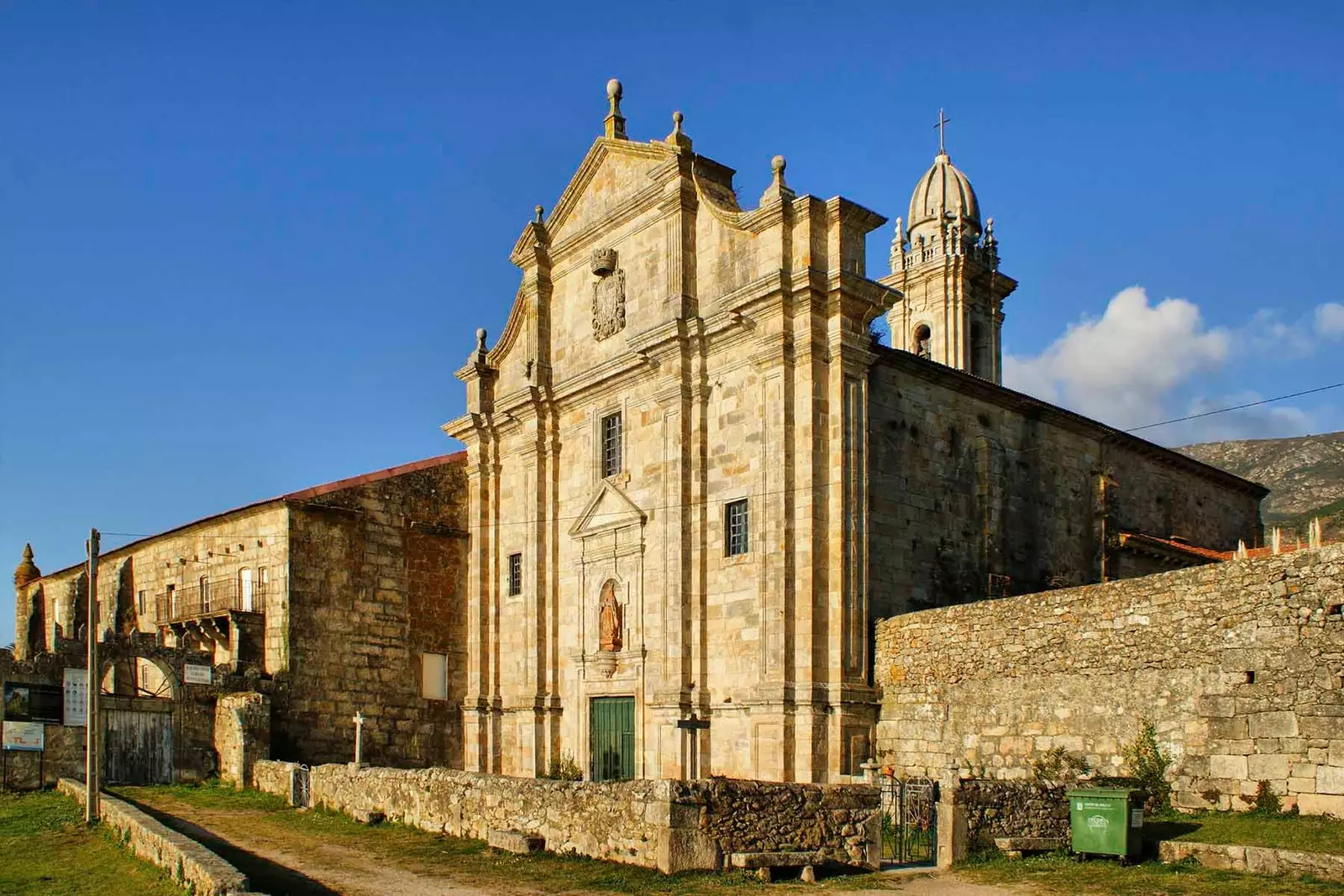
Oia Monastery: everything started here
Going through and accessing the valley of O Rosal is very easy from the south of Galicia, and even from the north of Portugal. Bridges over the Miño They communicate Tui with Valença and Goian with Vila Nova de Cerveira. Even in You you can choose the highway or the old iron bridge, which allows the passage of vehicles, pedestrians and the railway. Although the legend attributes its authorship to Eiffel, he devised it the Riojan engineer Pelayo Mancebo y Ágreda , and today is key in the passage of Camino de Santiago Portuguese.
EAST-WEST COMMUNICATION
The main artery of the valley is the one that crosses it from east to west between the two localities that delimit it in the south: You , inland on the Miño; Y To Guard , at the mouth and looking at the Atlantic. Along this horizontal artery are distributed most wineries and many of the curiosities it hides Or Rosal.
But, even to make this way, we can choose between the road PO-552 -our recommendation, since it also passes closer to the river bank-, or the CG-4.2 , the Bajo Miño Highway, which connects the Goian international bridge with A Guarda.
How to get there? From Vigo, by AP-9 to Tui, but from Baiona, there are different alternatives: along the coast to To Guard by road PO-552 ; inside through Gondomar and Tomino , by PO-344 ; or look for an alternative between the two, much more stimulating for those who like to drive and great fun by car or motorcycle. It's what we did.
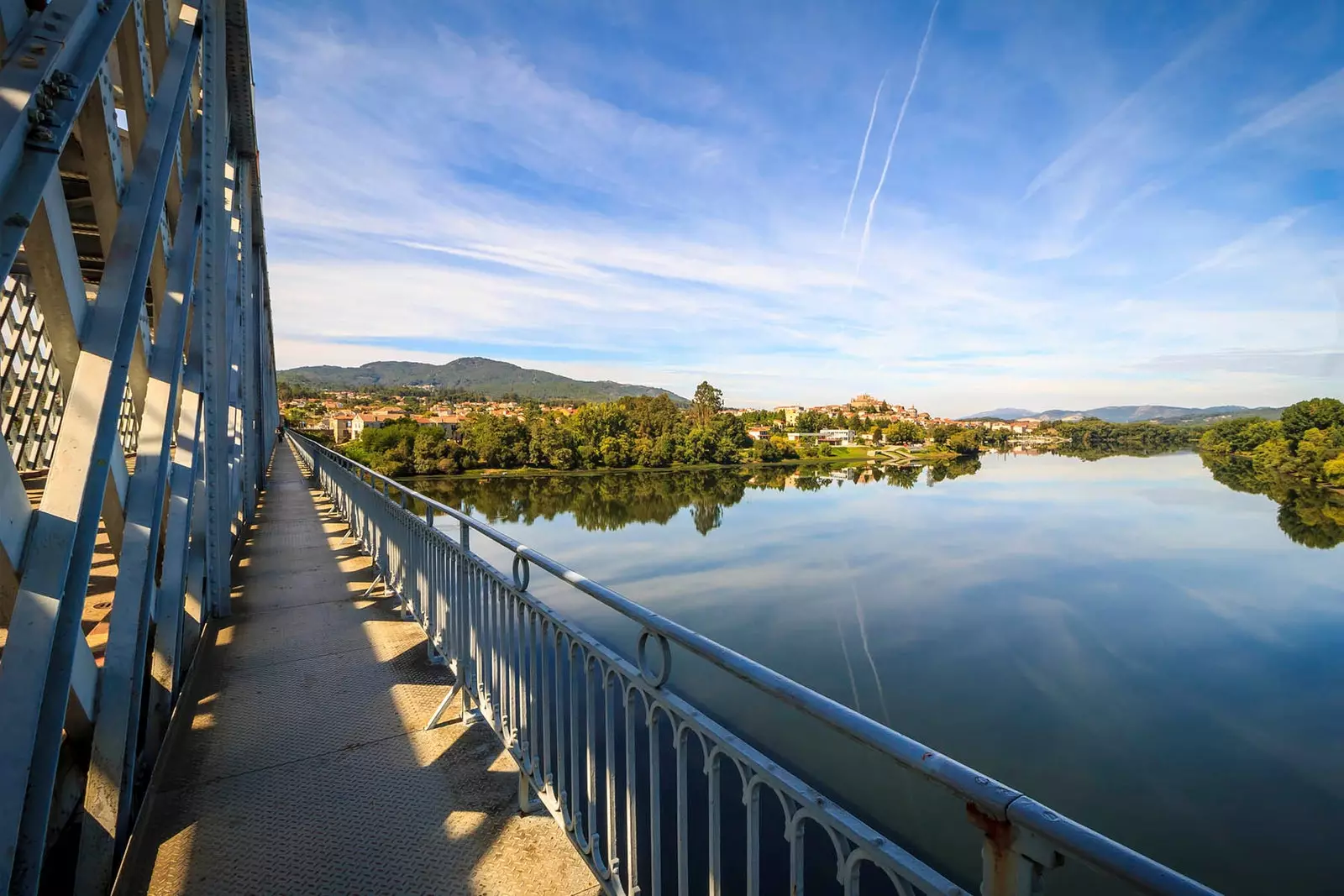
The bridge that will take you from Portugal
THE MOST ATTRACTIVE ROUTE
The PO-354 road runs from north to south from the town of Baiona, at the mouth of the Vigo estuary and in front of the Cies Island , to the mouth of the Miño, passing through the town of or rosebush , and connects with the road that runs through the valley of East to west and that will allow us to visit the most important wineries of the area. It is less comfortable but more entertaining at the wheel, and it will bring us closer to spectacular places.
The route starts very close to the entrance to the Baiona Parador , a old fortress , as evidenced by its spectacular walls, which is located in a small peninsula that closes the bay. Leaving, to the right, at the first roundabout, we take to the south, following the indication Virxe da Rocha (Virgin of the Rock).
In just a couple of kilometers, we find ourselves on the right with this gigantic granite sculpture with a boat in hand looking out to sea. the boat is a balcony which can be accessed through the interior of the sculpture. The locals call her ironically the Statue of Liberty of Bayonne.
THE VIEWPOINT OF THE THREE RIAS
The road takes us through a soaring viaduct over a motorway and we continue ascending. It has excellent firmness and almost no traffic . In the first section, we are accompanied by the pines and eucalyptus who have survived the voracious fire last year. As we advance, pines and ferns become widespread.
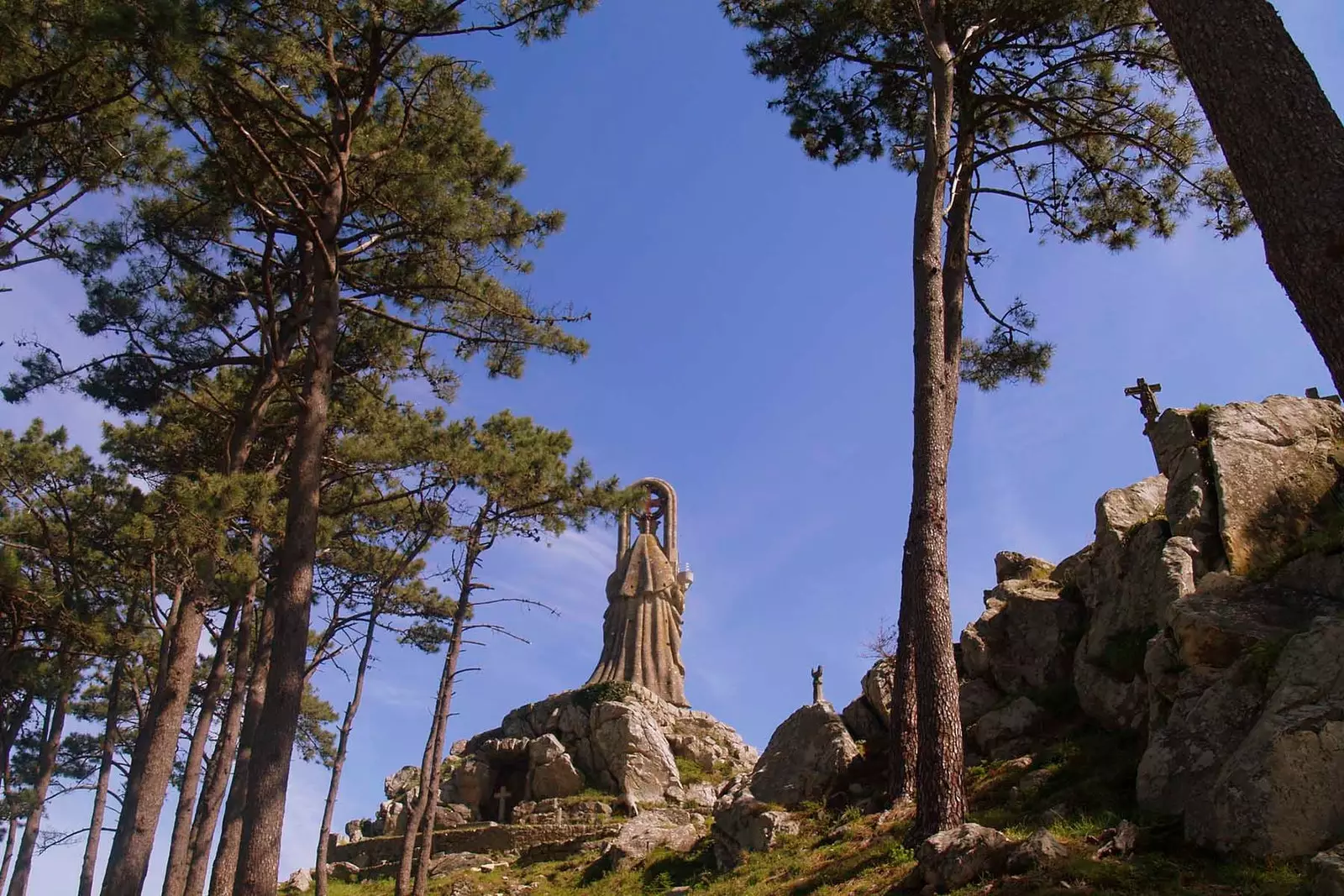
The picturesque Virgin of the Rock
In just 11 kilometers we will ascend from sea level to the top of Monte da Groba , 648 meters. Is he highest point of the mountain range of the same name, a plain that becomes a spectacular viewpoint over the Vigo estuary, the Cíes Islands, Ons, Monteferro, Cape Home … On clear days you can also see the estuary of Pontevedra and even Vilagracia.
This stop was the end of the stage of the 2013 Cycling Tour , and it has been used for other years in the test, so it is very easy to come across some athletes on two wheels.
ANIMALS IN FREEDOM
Just a few miles before the top we cross Chan da Lagoa, a forest park where wild horses roam freely, accompanied by brown cows, decorated with spectacular antlers, goats and sheep, everyone absolutely free , without fences and moving at will. you have to drive carefully , because they cross the asphalt at will.
The monks of Oia They were the ones who introduced the horse breeding in freedom in its mountains, an activity that is still practicing in the area and which gives rise to an impressive show, To Rapa das Bestas , which is organized once a year, in summer, at different points on the mountain.
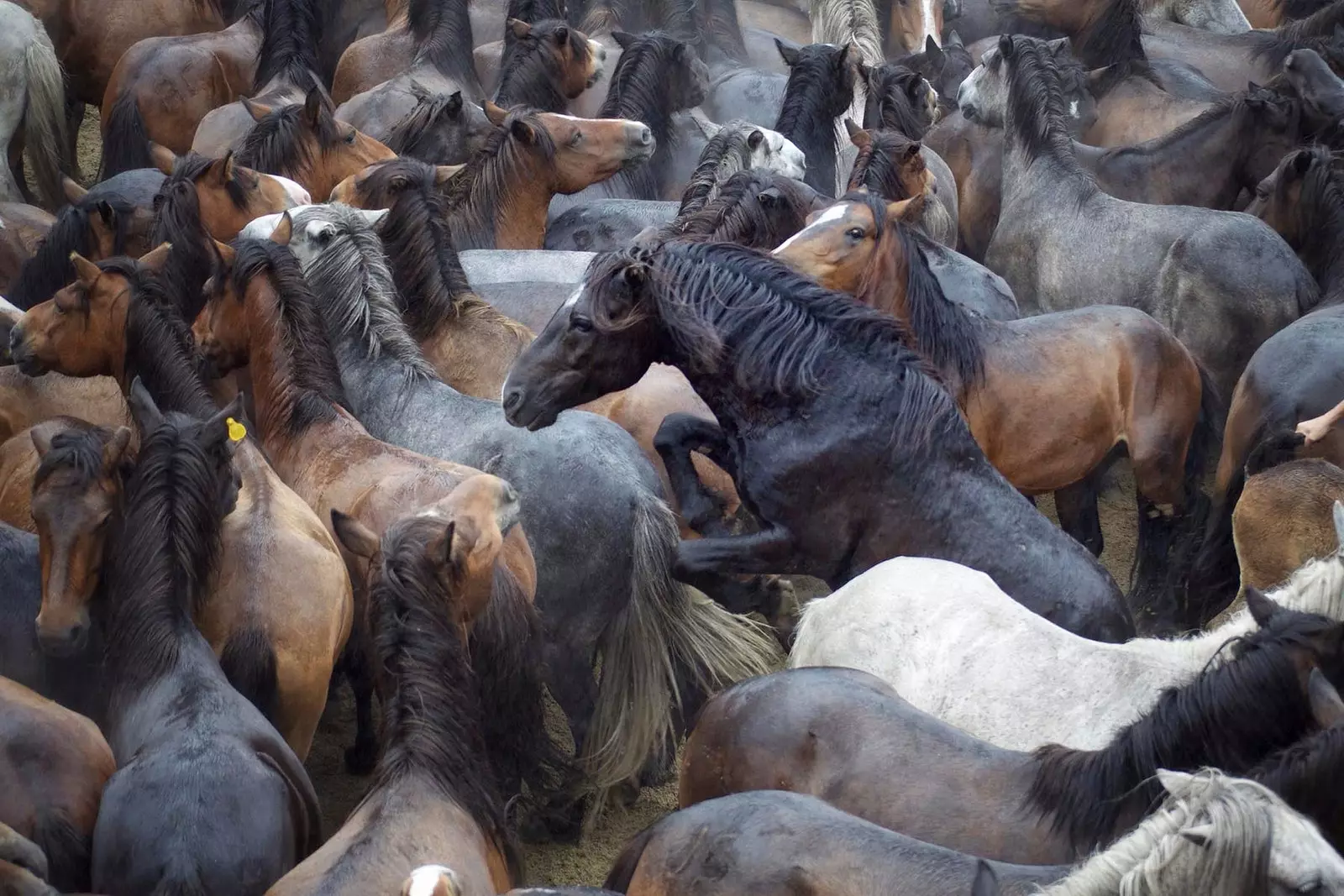
A Rapa das Bestas, a spectacular festivity
It is done in so-called 'curros' , fences where horses are grouped , are marked, their manes are cut and they buy and sell. One of the most famous 'curros', that of mougas, is to the side and we see the deviation to the right.
From this point, we begin to descend the opposite slope towards torrona, where the proliferate cornfields, very typical of the Galician coastal areas. corn is used for feed the animals, and the pits, to make the embers where grill sardines in summer.
WELLS AND MILLS
The wagon links curves left and right as we begin to have a good panoramic view from the valley. We leave a deviation to the right to tomino , another important town, and we entered the parish of Loureza.
Among the walnut and chestnut trees the first vines . The road borders the Loureza River, narrows on the bridges and in some sections it does not have a hard shoulder. After drawing a curve 180 degrees on a bridge over the river, we find a larger shoulder, where you can park for see the waterfalls and pools what does the river do Pools of Loureza.
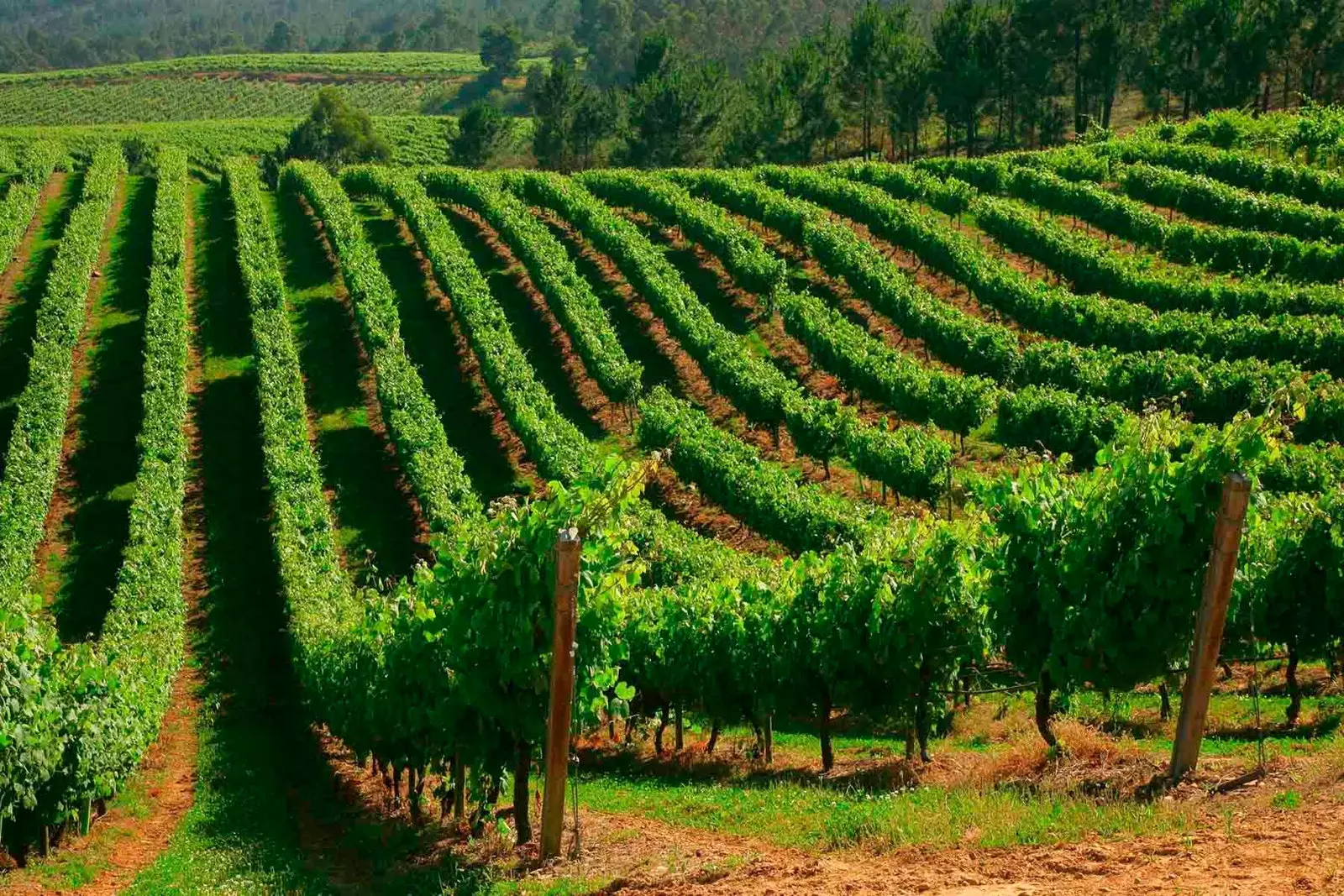
160 hectares to get the best wine
INNOVATIVE WINERY
The next stage takes us to the Terras Gauda Winery , one of the most important and cutting-edge of O Rosal. It is relatively young man , was born in the late 1980s, and its first vintage was 37,000 bottles . This year it has launched 1.5 million , and explode 160 hectares , 18 around the warehouse, which is located in the km 55 of the PO-552 highway . Inside the garden they still preserve the cairn that was in the old road when they started to work.
This winery, which collaborates with the CSIC , was one of the first to replace the traditional vine with which the vine has been cultivated for centuries in Galicia for the trellis system.
In addition, he has selected five best varieties of Albariño , which are the ones it currently plants, after having analyzed more than 100, and it has a own yeast, that he has patented with the CSIC. This yeast is naturally in the grape skin, and manages to homogenize all the crops. Export 30% of its production and the remaining 70%, 40%, is consumed in Galicia, so they have been prophets in their land.
TRADITIONAL WINERY
The next stage takes us to Quinta Couselo , one of the warehouses Older of O Rosal, with that of Santiago Ruiz. Its origins date back to XII century, when was the place of monks rest from the neighboring monastery of Oia.
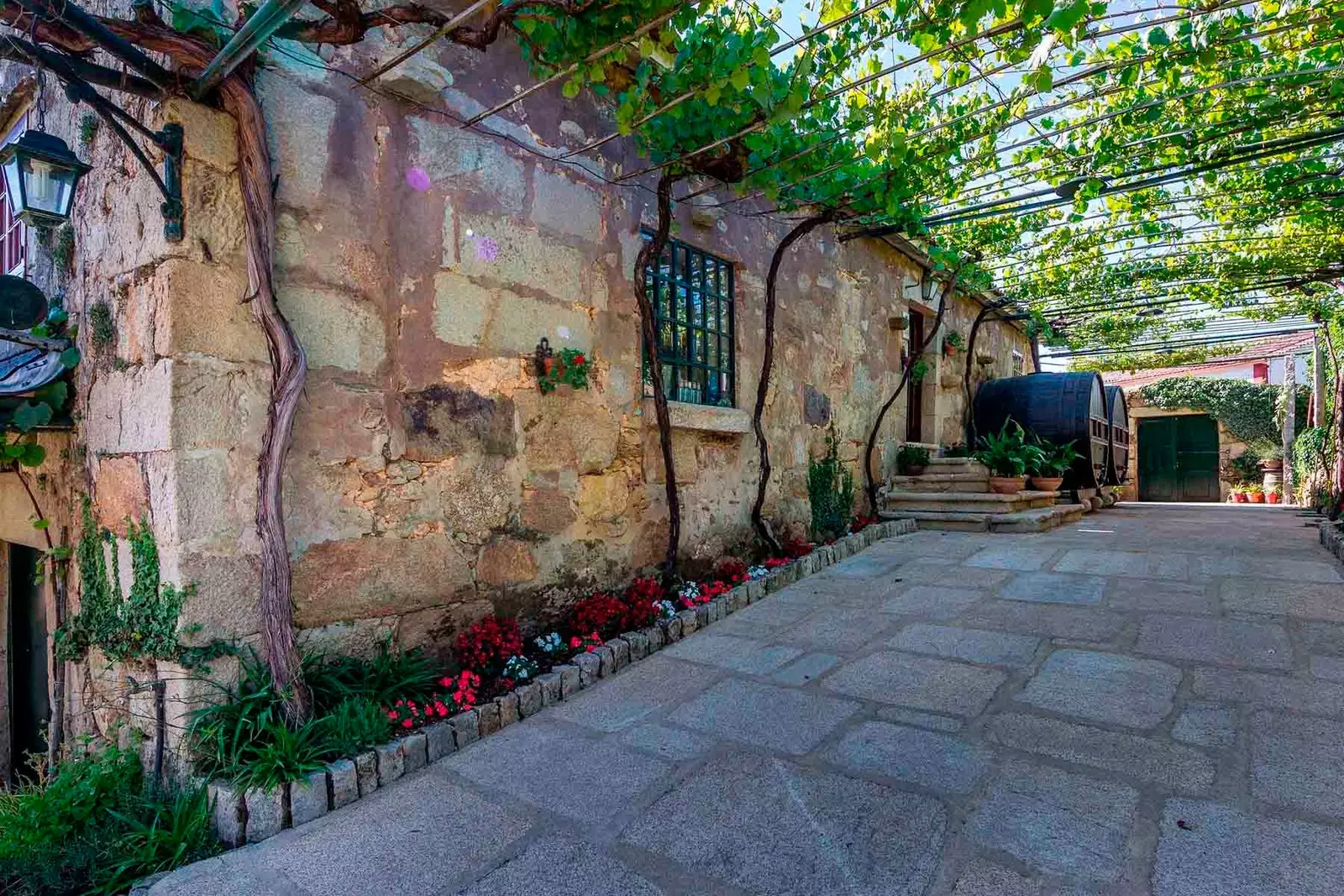
Quinta Couselo, a small and traditional winery
After passing through different hands, in 2013 it was acquired by a Galician wine group which has expanded the traditional facilities with a new winery. But maintains the historic logo linking Quinta Couselo wine with its past, symbolized by two stone pines Mediterranean -one of them, with more than 350 years-. Its pine nuts were used by the friars to make desserts , as they tell us in the cellar.
Quinta Couselo annually produces some 150,000 bottles, and its goal is to continue being a winery small with a very careful production and addressed to experts . It exports 20% of its production and is one of the few that is authorized to distill spirits. But in O Rosal there are more wineries, such as ** Lagar de Fornelos , Aldea de Abaixo , Altos de Torona or Valmiñor .** Most can be visited, but all always with appointment.
SLEEP AND EAT
Eat well in the Rías Baixas is insured in almost any tavern or restaurant , but as a special recommendation, we suggest the **baked fish from La Mar Salada**, in the port of Panxón, and the seafood from Rocamar, in Baiona.
To stay, the area offers two excellent options: Paradors of Tui Y Bayonne , both on the water but with different vocation. First look at Miño and Valença, in Portugal; the location of the second could remember the bow of a ship which is oriented towards America.
one more option affordable and bucolic among the rural houses that populate this area is A Casa do Marques , on the Ladeira beach, in Sabaris , which lives up to his name. Have breakfast in the coquette backyard It is a moment of maximum relaxation.
TO READ BETWEEN LAUGHS
A trip to this area can be a good opportunity to reread 20,000 leagues under the sea , by Jules Verne, and remember that the captain nemo was supplied with gold in the estuary of Vigo , in Rande.
A more current alternative is The beach of the drowned , by Domingo Villar from Vigo, an entertaining 'sailor' thriller that takes place on these beaches.
You can also choose to The carpenter's pencil , by Manolo Rivas, which recovers the sad story of the San Simon Island in the Vigo estuary, which served as a bloody prison during the Franco regime. Today, on that island, there is a sculpture in homage to Julio Verne.
